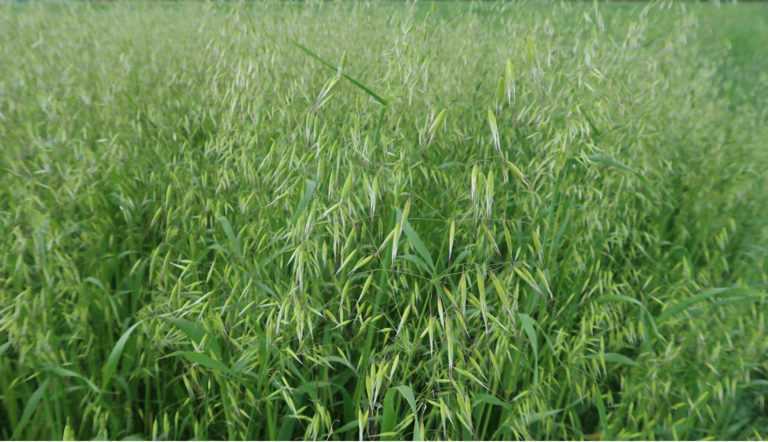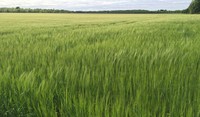
Wild oat control in cereals

Therefore, in addition to employing cultural controls such as hand rogueing and weed mapping to tackle troublesome infestations, an appropriate herbicide programme should also be used to treat the worst affected areas.
Unfortunately, like many other vigorous weeds, the two main species of wild oats (Avena fatua and Avena ludoviciana) have developed varying degrees of resistance to a range of herbicide active ingredients. Of the two, Avena fatua is the more commonly occurring species in the UK, while Avena ludoviciana (sterile oat) is more prone to resistance.
Thankfully, resistance to the various herbicides approved for use against wild oats (ACCase inhibitors such as clodinafop, cycloxydim, propaquizafop and pinoxaden and ALS inhibitors such as mesosulfuron) is developing relatively slowly. Even so, it is important to reduce the threat of further resistance by using a rotation of herbicide modes of action.
It is also important to know which species of wild oats is present in the cropped field as different species express peak emergence at different timings.
Other factors, specifically water rate, boom height, nozzle selection and forward operating speed should also be given careful consideration to ensure the actives applied have the best chance to work effectively (see below).
If using a clodinafop-based herbicide such as TOPIK (240 g/L clodinafop-propargyl & 60 g/L cloquintocet-mexyl), the first spray application should be made as soon as conditions are conducive to effective herbicide performance, with GS41 the latest practical cut-off timing: beyond this growth stage the crop canopy may have developed to such an extent that it prevents effective coverage of the target weeds (more information below).
TOPIK can also be used to control rough meadow-grass, and provides moderate control of susceptible Italian rye-grass.

The power of TOPIK: treated (left) vs. untreated (right).
Herbicide best practice
To achieve the best results, TOPIK must be used with care to ensure complete spray coverage is achieved: busy spraying schedules can make it tempting use a reduced water volume so that more ground can be covered within a specific window of opportunity. This is a feasible strategy when weeds are still small and not shielded by the crop canopy, but it is an poor technique to use later in the season when the crop is bigger.
As a rule of thumb, it is possible to reduce water volume prior to GS31 (using 100l/ha instead of 200l/ha), but beyond this growth stage it is advised that a water volume of at least 200l/ha should be used. There is however some evidence to suggest that smaller droplets and a concentrated solution using 100l/ha will perform well at the GS31-41 timing, but only if the wild oat plants are larger than the crop and therefore emerging above the crop canopy.
Irrespective of when it is applied, TOPIK will perform best when used during good growing conditions for the target weed as this improves product uptake. In contrast, cold and dry conditions will impede the efficacy of all ACCase herbicides, even when applied at the optimum timing for wild-oat activity.
Spraying tips
Nozzle choice, boom height and forward operating speed all effect spray coverage, as do nozzle choice and angle. The simple advice when spraying for wild oats is to:
- Spray slowly (maximum 12pkh)
- Spray at a sensible boom height (50cm above the canopy)
- Use an appropriate water volume (200l/ha after GS31)
- Select a nozzle type and angle to target weeds beneath the crop canopy.

Reducing sprayer forward speed from 16kph down to 12kph is just one of the considerations needed to maximise wild oat control. Water volume, boom height and nozzle choice are also key factors, especially when tackling weeds protected by a thick crop canopy.
(Photo credit: Syngenta forward speed trial on TOPIK)
TOPIK: growth stage application recommendations

TOPIK (240 g/L clodinafop-propargyl and 60 g/L cloquintocet-mexyl)
Controls wild oats, rough meadow-grass and gives moderate control of Italian rye-grass in wheat, durum wheat and triticale.
Optimum timing:
Wild-oats from 1 leaf unfolded up to flag leaf ligule visible.
Application rates:
0.25//ha
0.125//ha plus a suitable adjuvant (e.g. methylated seed oil)
Optimum weed control is best achieved when all the wild-oats have emerged and are actively growing in good conditions. More information here.


